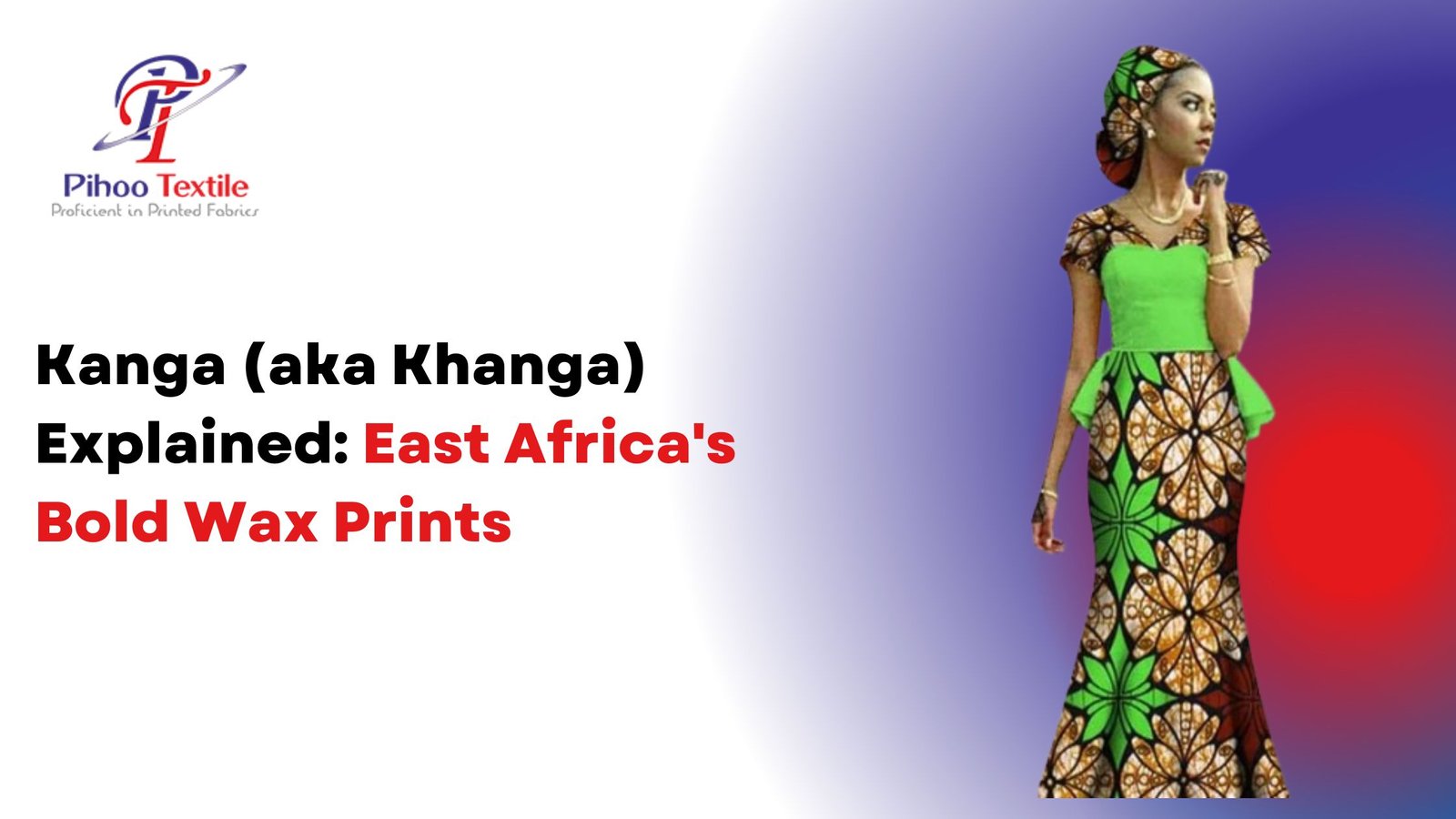Kanga (aka Khanga) Explained: East Africa’s Bold Wax Prints
Kanga Explained: East Africa’s Bold Wax Prints
Most textile buyers searching for culturally authentic fabrics encounter a frustrating reality. The market overflows with generic prints claiming heritage connections, but few deliver genuine cultural depth or practical versatility. Kanga—East Africa’s rectangular cotton cloth—stands apart. This isn’t decorative fabric with surface-level patterns. It’s a communication system, social tool, and practical textile that’s survived more than a century by adapting without losing its essential character.
The uncomfortable historical truth? Kanga emerged as a direct response to slavery, when formerly enslaved East African women rejected the plain, hot “Merikani” canvas forced on them by colonial powers and embraced bright, printed fabrics as statements of freedom and autonomy. This origin story matters because it explains why kanga carries meaning beyond aesthetics. For fabric buyers and fashion brands prioritizing authentic heritage textiles, understanding kanga’s design structure, communication role, and production realities becomes essential. This piece breaks down what makes kanga distinct, how it functions socially, and why it remains commercially relevant in 2025.
Origins and Historical Journey of Kanga
Kanga’s roots trace to 19th century East Africa, specifically coastal trading centers like Mombasa and Zanzibar.
The name derives from the Swahili word for guinea fowl—those spotted birds with elegant plumage. Early kanga designs featured white spots on dark backgrounds, directly mimicking the bird’s pattern. But the fabric’s development involved multiple cultural influences: Portuguese traders brought kerchiefs called “lenços,” while American cotton (merikani) provided base material.
Stylish women in coastal cities started buying printed kerchiefs in sets of six, cutting and stitching them into larger sheets. Local merchants recognized demand and commissioned unified designs that eliminated sewing. By the early 1900s, Swahili sayings appeared on kangas—reportedly popularized by Mombasa trader Kaderdina Hajee Essak.
Evolution of Production
For most of the 20th century, India, the Far East, and Europe produced kangas. Local manufacturing didn’t begin until the 1950s in Tanzania and Kenya. By 1985, Tanzania had become one of the largest producers. Today, Kenya, Tanzania, Pakistan, India, and China all manufacture kanga, with China currently dominating volume production.
Design Structure and Symbolic Elements
Kanga follows a precise design architecture that distinguishes it from other African textiles.
Standard dimensions measure approximately 150cm length by 110cm width—sized to wrap around the body from neck to knee or breast to toe. The design consists of three essential components:
- Pindo (border): Decorative frame surrounding the entire cloth
- Mji (central motif): Pattern filling the interior space—floral, geometric, or symbolic
- Jina (inscription): Swahili proverb or phrase, typically positioned within the border
Kangas are sold in pairs called “doti” and remain uncut at purchase. Two or more vibrant, high-saturation colors dominate each design, creating bold visual impact.
Color and Pattern Meanings
Pattern categories include florals representing beauty and growth, geometric shapes signifying unity and strength, cultural icons connecting to heritage, and contemporary designs blending modern aesthetics. Colors aren’t arbitrary—they communicate specific concepts within East African communities.
Cultural Significance as “Talking Cloth”
Here’s the contrarian insight that surprises Western buyers: kanga functions primarily as a communication medium rather than just clothing.
East African women select specific kangas to send non-verbal messages to friends, family, rivals, or communities. The Swahili proverbs printed on each kanga range from romantic declarations to political statements, health advice to religious wisdom. When direct speech feels inappropriate or dangerous, kanga delivers the message.
Social and Political Applications
Campaign managers print political slogans on kangas to mobilize voters—particularly effective since kanga appeals strongly to women, whose support determines election outcomes. Public health campaigns use kanga to spread HIV/AIDS awareness messaging. Religious leaders commission kangas celebrating Eid or Christmas.
During colonialism, when British authorities expected formerly enslaved women to demonstrate Islamic modesty through discrete speech, kanga became the outlet for expressing “unIslamic” thoughts and challenging social restrictions.
Multiple Practical Uses
Kanga’s versatility extends far beyond garment applications.
Women use kangas as baby carriers secured around the torso, towels after bathing, curtains for windows, tablecloths, seat covers, pillow cases, and duvet covers. They support loads carried on heads or backs. Men wear them around the house and sleep in them.
The fabric adapts to life stages: newborn babies receive kangas symbolizing prosperity; pubescent girls get red-and-black kangas marking transition; brides walk on kangas to avoid dirt; mourners receive kangas from consolers; elders wrap themselves in specific patterns.
Production Quality and Material Standards
Authentic kanga uses 100% cotton for softness and breathability.
Traditional production involved block printing, creating texture and depth. Modern manufacturing uses advanced wax-resist and direct printing methods that maintain color vibrancy through repeated washing. The most sought-after kangas remain traditional soft cotton in diverse colors, patterns, and styles.
Recent price pressures on cotton have pushed some manufacturers toward synthetic blends or polyester alternatives. However, educated buyers specifically request pure cotton for its comfort in tropical climates.
Contemporary Fashion Applications
Modern designers integrate kanga beyond traditional wrapping styles.
Contemporary uses include tailored tops, structured skirts, shawls, headwraps, bags, and fashion accessories. Layering multiple kangas creates multidimensional aesthetics that blend heritage with current trends. Each styling choice communicates something—selecting a kanga becomes an intentional act of expression rather than simple clothing selection.
Fashion buyers source kangas for products requiring cultural narratives that justify premium pricing. The fabric’s adaptability across casual wear, formal occasions, and home textiles makes it commercially versatile.
Market Positioning and Demand Patterns
Kanga remains highly fashionable across Africa, Europe, Asia, and the United States.
Markets stock kangas in major African cities and small villages globally. Diaspora communities maintain strong demand for authentic designs that connect them to East African heritage. The challenge? Distinguishing genuine cotton kangas with meaningful inscriptions from mass-produced imitations lacking cultural authenticity.
Buyers increasingly request verification of cotton quality, print clarity, and accurate Swahili translations before committing to bulk orders.
Conclusion
Kanga’s survival for over a century demonstrates how textiles can carry both practical utility and deep cultural meaning. Its evolution from resistance cloth to communication medium to global fashion staple shows adaptability rooted in authentic heritage rather than manufactured backstories.
Pihoo Textile manufactures premium African Khanga fabrics using 100% cotton base materials and advanced printing technology at our Jetpur facility. Our production combines traditional design sensibilities with modern quality controls, delivering authentic kanga textiles that meet international standards for color fastness, durability, and cultural accuracy.
Browse our Khanga fabric collection or contact our team to discuss custom designs, bulk orders, and wholesale partnerships that bring East Africa’s most versatile textile to your product lines.


